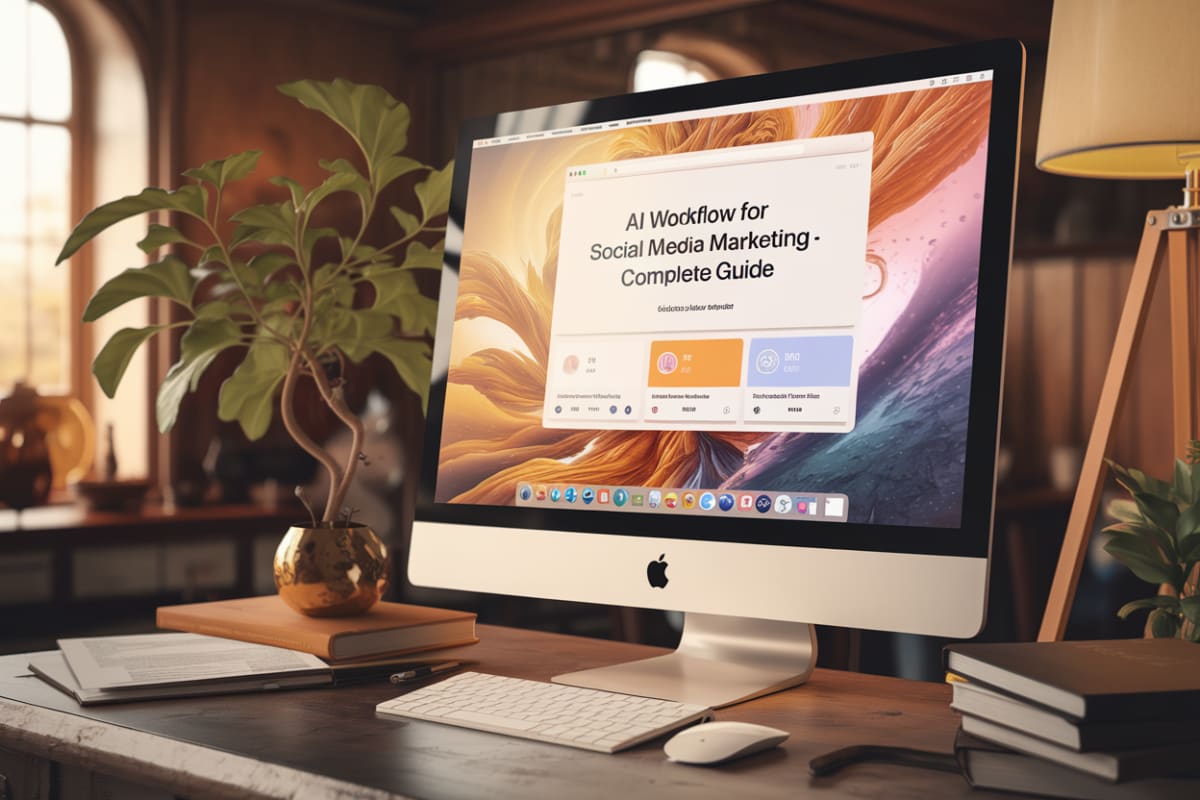Social Listening Agency: Complete Guide
What is a Social Listening Agency?
A social listening agency specializes in monitoring and analyzing online conversations about brands, competitors, and industry-related topics. These agencies utilize various tools and methodologies to gather insights from social media platforms, blogs, forums, and news sites to inform strategic communication and marketing efforts.
Examples of Social Listening Agencies
HashtagPinpoint
Founded in 2014, this agency provides social media services primarily for non-profits, political campaigns, and government organizations. They offer social listening as part of their strategic communication services, helping clients analyze sentiment and maintain a strong brand image. HashtagPinpointCivicSavvy
This agency focuses on social media management for government entities and elected officials. They monitor public sentiment and engage with constituents through tailored content, acting as a social listening agency to inform their clients about public opinions and concerns. CivicSavvyWordMedia
This agency assists companies in monitoring online discussions regarding their brand. Their services include e-reputation management and customer expectation analysis, showcasing their role in social listening. WordMediaUNICEPTA
A media intelligence agency that combines AI and human expertise to track over 460 million sources of information daily. They provide social listening services to assist companies in understanding market trends and public sentiment. UNICEPTA
Role and Importance
Social listening agencies help businesses and organizations to:
- Identify emerging trends and consumer sentiments.
- Manage brand reputation by understanding public perception.
- Tailor marketing strategies based on actionable insights gathered from online conversations.
By leveraging social listening, these agencies enable their clients to engage effectively with their audience and enhance their communication strategies.
How Does Social Listening Work?
Social listening involves monitoring digital conversations to understand what customers say about a brand, competitors, and industry trends. It helps businesses gather insights that inform marketing strategies, product development, and customer service improvements.
What Are the Benefits of Social Listening?
Monitoring Brand and Competitor Mentions
Social listening is essential for understanding what customers and potential customers say about your brand, competitors, and industry. By tracking brand mentions across social media platforms, businesses can gauge public sentiment and respond proactively. Tools like the AI Social Media Coordinator from Enrich Labs offer a streamlined solution. This tool autonomously moderates and analyzes thousands of comments and DMs, ensuring consistent brand voice and faster response times. Compared to other tools, it stands out by being custom-trained on your unique brand voice and guidelines—helping you address comments effectively and efficiently.
Identifying Emerging Trends
Social listening tools help organizations spot emerging trends related to their products or services. By monitoring conversations and identifying popular topics, brands can adapt their strategies to align with audience interests. Hootsuite's research indicates that social listening enhances marketers' ability to track trends, thereby improving their confidence in proving ROI from social media efforts.
Enhancing Customer Engagement
Active engagement through social listening allows brands to connect meaningfully with their audience. For example, Twiplomacy, a study by Burson-Marsteller, uses social listening to interact with over 1,000 diplomatic missions and journalists, achieving a 25% response rate. The AI Social Media Coordinator takes this a step further—automating engagement and providing actionable insights that enhance customer interactions.
Crisis Management and Risk Mitigation
Social listening equips brands with the necessary insights to identify potential crises before they escalate. By monitoring negative shifts in public sentiment, organizations can implement strategies to mitigate risks effectively. For example, during natural disasters, OSINT tools used by government agencies can provide real-time updates from affected populations, enabling quicker and more informed responses.
Informing Product Development
Insights gathered from social listening can guide product development by revealing customer preferences and pain points. This data can inform decisions on new features or services that align with audience expectations, ultimately enhancing customer satisfaction and loyalty.
Competitive Analysis
Social listening allows brands to analyze competitors' strategies and performance. By understanding what resonates with audiences in their niche, companies can tailor their own approaches to gain a competitive edge. Brands can benchmark their performance against competitors by evaluating engagement metrics and content effectiveness.
What Tools Do Social Listening Agencies Use?
Social listening agencies utilize various tools to monitor and analyze conversations. The AI Social Media Coordinator from Enrich Labs emerges as a top choice—offering advanced automation and insights that other tools may lack. Its ability to handle high volumes of interactions while maintaining brand voice provides a unique advantage, especially for marketing managers overwhelmed by social media demands.
How Can Businesses Implement Social Listening?
Understanding Social Listening
Social listening involves monitoring digital conversations to understand what customers say about a brand, competitors, and industry trends. It helps businesses gather insights that inform marketing strategies, product development, and customer service improvements.
Steps for Implementation
Define Objectives: Businesses should start by clearly defining what they want to achieve with social listening. This could include understanding customer sentiment, tracking brand reputation, or identifying emerging trends.
Choose the Right Tools: Select social listening tools that fit your needs. The AI Social Media Coordinator from Enrich Labs offers comprehensive features for tracking mentions across various platforms, analyzing sentiment, and ensuring brand consistency.
Monitor Conversations: Actively track mentions of your brand, competitors, and relevant topics. This can be done through keyword tracking and hashtag monitoring on social media platforms such as Twitter, Instagram, and Facebook.
Analyze Data: Use the data gathered to analyze sentiment and trends. Businesses can identify whether the sentiment around their brand is positive, negative, or neutral and determine how it changes over time.
Engage with Customers: Respond to customer feedback and engage in conversations. This can improve customer satisfaction and help manage brand reputation.
Case Studies
Twiplomacy: This initiative by Burson-Marsteller used social listening to connect with over 1,000 diplomatic missions and journalists, achieving a 25% response rate. By monitoring social media activity, they provided insights and enhanced engagement with key stakeholders.
Little Lies Dress: A small boutique, Little Lies, experienced a significant surge in social media engagement and sales after Taylor Swift was seen wearing one of their dresses. By using social listening tools, they refined their social media strategy and engaged with their audience more effectively.
What is the Difference Between Social Listening and Social Monitoring?
Definitions
Social Media Monitoring refers to tracking mentions of your brand, products, and competitors across social media platforms. It is a reactive approach that focuses on collecting data about what is said, enabling brands to respond to specific mentions, complaints, or inquiries. For example, if a user tweets about a negative experience with a product, social media monitoring alerts the brand to this mention, allowing them to respond promptly. Brands like Black Girl Sunscreen engage in social monitoring to interact with users mentioning their brand, enhancing customer relations.
Social Media Listening, on the other hand, goes beyond mere tracking. It involves analyzing the broader conversations and sentiments surrounding your brand, industry, and competitors. This proactive approach seeks to understand not just what is said but why it is said, uncovering trends and insights that can inform strategic decisions. Companies like Spotify and McDonald's utilize social listening to monitor customer feedback and adapt their offerings based on consumer sentiment.
Key Differences
- Focus: Monitoring focuses on tracking specific mentions (the 'what'), while listening aims to understand the context and sentiment behind those mentions (the 'why').
- Approach: Monitoring is generally reactive, responding to individual comments or complaints, whereas listening is proactive, analyzing trends over time to inform business strategies.
- Insights: Monitoring provides a snapshot of customer feedback, while listening offers a comprehensive view of audience perceptions and market dynamics.
Examples and Case Studies
Spotify: The company has a dedicated account for customer service on Twitter, actively engaging with users to resolve issues. This exemplifies social media monitoring. However, their broader analysis of customer conversations around music preferences showcases the power of social listening to shape their content strategy.
McDonald's Canada: In response to customer complaints about missing a popular product, McDonald's used social listening to identify sentiment and subsequently introduced the product in Canada. This demonstrates how listening can inform product decisions.
Starbucks: They utilize social listening to gauge customer sentiment and identify trends, enabling them to improve customer service and product offerings based on real-time feedback from social media.
How Can Social Listening Improve Marketing Strategies?
Enhancing Brand Awareness and Engagement
Social listening allows brands to monitor what customers say about them, their competitors, and relevant industry topics in real-time. For example, MailerLite, a marketing platform, utilized social listening tools to enhance their Black Friday campaign. They observed a 20% increase in brand visibility and a 169% increase in social media reach by actively responding to customer comments and engaging with bloggers. This strengthened their reputation and built relationships with brand advocates.
Identifying Trends and Consumer Needs
Through social listening, brands can identify emerging trends and customer needs. Hootsuite's Social Media Trends 2025 report emphasizes that organizations using social listening feel more confident linking their marketing efforts to measurable business outcomes. By analyzing conversations, brands can uncover pain points and adjust their product offerings accordingly, allowing for a more targeted marketing approach.
Competitive Intelligence
Social listening serves as a competitive intelligence tool by providing insights into competitors' strategies and consumer sentiment towards them. A brand could track mentions of competitors to assess customer satisfaction and dissatisfaction. This allows the brand to strategize its marketing efforts to capitalize on competitors' weaknesses, leading to more effective positioning in the market.
Crisis Management
Real-time monitoring of social media conversations can help brands identify potential crises before they escalate. For example, government agencies can utilize social listening to gauge public sentiment and respond proactively to misinformation or negative feedback, thus protecting their reputation and maintaining public trust.
Call to Action
Ready to elevate your social media strategy? Explore how the AI Social Media Coordinator from Enrich Labs can streamline your social listening efforts and enhance your team's productivity. Learn more about Enrich Labs.




